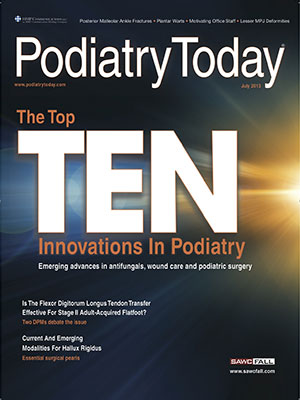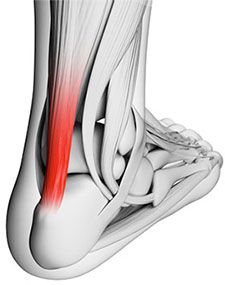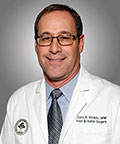- Home
- Foot & Ankle Conditions
- Achilles Tendon Injuries
- Achilles Tendinitis and Achilles Tendinosis
Achilles Tendinitis and Achilles Tendinosis: symptoms, causes and treatments
- Published 6/1/2018
- Last Reviewed 11/13/2024
Dr. Baravarian explains the difference between Achilles Tendonitis, tendinosis, and a rupture
What are Achilles Tendinitis and Achilles Tendinosis?
The Achilles tendon (calcaneal tendon) is one of the longest tendons in your body, extending from your calf muscles to the heel bone. Achilles tendinitis is a common overuse injury that results in inflammation of the tendon. This overuse injury results from repetitive stress to the tendon.
Achilles tendinitis vs. tendinosis: what's the difference?
Achilles tendinosis is very similar to tendinitis with one critical difference: it has now become a chronic condition, usually because the injury wasn’t properly treated early on. When the condition progresses to degeneration, thickening of the tendon along with scar tissue can occur, resulting in partial tearing of the tendon fibers. At this point, without medical intervention, the pain will remain or get worse over time.
- What are the symptoms of Achilles tendinitis?
- What causes Achilles tendinitis?
- How do the podiatrists at University Foot & Ankle Institute diagnose an Achilles injury?
- What are conservative treatments for Achilles tendinitis?
- Advanced non-invasive treatments For Achilles tendinosis
- Surgery options for Achilles tendon repair
- UFAI's Achilles Tendinitis & Tendinosis Fast Facts
- Why UFAI is the best choice for Calcaneal Tendon injuries
- Achilles Tendinitis FAQs
- Are steroid injections helpful in the treatment of Achilles tendon disorders?
- Do you commonly use ultrasound and magnetic resonance imaging (MRI) to evaluate Achilles pain?
- Can Haglund’s deformity contribute to Achilles tendonitis?
-
ABFAS® Board Certified in Foot and Ankle Surgery and Co-Director of University Foot and Ankle Institute
Board-Certified Podiatric Foot and Ankle Specialist, Dr. Gary Briskin, DPM, FACFAS, began his medical training by serving a residency at Flint General Hospital in Michigan. Once completed, he established a practice in Century City Hospital, where he soon became chief of podiatric surgery.
Dr. Briskin is a Diplomat of the American Board of Podiatric Surgery and a Fellow of the American College of Foot and Ankle Surgeons. He also serves as an assistant clinical professor at the UCLA School of Medicine and is co-founder and co-director of University Foot and Ankle Institute.
Read Our Achilles Tendon Blog Articles
- An Inside Look at Shockwave Therapy for Heel Pain, now available in Valencia, CA
- Avoiding Foot and Ankle Overuse Injuries While Dog Walking
- How Carrying Extra Weight Affects Your Feet and Ankles
- What's Plantar Tendonitis and Why is it Still a "Medical Mystery"?
- Got Plantar Fasciitis or Achilles Tendonitis? Could PRP, Amniox Stem Cells or Cortisone Answer Your Pain Relief Prayers?
- Your Lower Back Pain May Be Caused By How You Walk
- Common Prescriptions and OTC Medications That Affect Your Feet and Certain Foot and Ankle Conditions
- Achilles Tendinitis Treatment Do’s and Don’ts
- Beat the 6 Most Common Walking Pains
 Dr. Franson not only took over my husbands care for a foot wound that was very stubborn in healing, he virtually saved his life...Melissa H.
Dr. Franson not only took over my husbands care for a foot wound that was very stubborn in healing, he virtually saved his life...Melissa H. I liked it.Liisa L.
I liked it.Liisa L. I depend on the doctors at UFAI to provide cutting edge treatments. Twice, I have traveled from Tucson, Arizona to get the car...Jean S.
I depend on the doctors at UFAI to provide cutting edge treatments. Twice, I have traveled from Tucson, Arizona to get the car...Jean S. They helped me in an emergency situation. Will go in for consultation with a Dr H????
They helped me in an emergency situation. Will go in for consultation with a Dr H????
Re foot durgeryYvonne S. It went very smoothly.Maria S.
It went very smoothly.Maria S. My experience at the clinic was wonderful. Everybody was super nice and basically on time. Love Dr. Bavarian and also love the ...Lynn B.
My experience at the clinic was wonderful. Everybody was super nice and basically on time. Love Dr. Bavarian and also love the ...Lynn B. I highly recommend this podiatric medical practice. From the front desk to the PAs and the Physicians, this team is genuinely c...Miguel M.
I highly recommend this podiatric medical practice. From the front desk to the PAs and the Physicians, this team is genuinely c...Miguel M. Dr. Franson is a caring and thoughtful Doctor. He listens to your concerns and uses his best judgement to try and help you. He ...Joanna S.
Dr. Franson is a caring and thoughtful Doctor. He listens to your concerns and uses his best judgement to try and help you. He ...Joanna S. I fill I got the best service there is thank youJames G.
I fill I got the best service there is thank youJames G. My experience with your practice far exceeded any of my expectations! The staff was always friendly, positive and informative. ...Christy M.
My experience with your practice far exceeded any of my expectations! The staff was always friendly, positive and informative. ...Christy M. Love Dr. Johnson.Emily C.
Love Dr. Johnson.Emily C. I am a new patient and felt very comfortable from the moment I arrived to the end of my visit/appointment.Timothy L.
I am a new patient and felt very comfortable from the moment I arrived to the end of my visit/appointment.Timothy L.
-
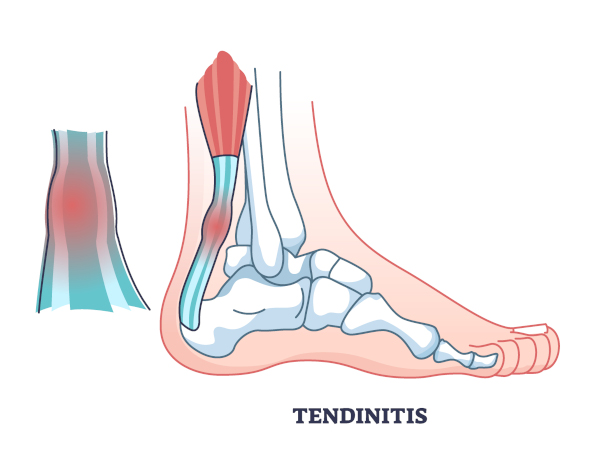 Achilles Tendinitis Treatment Do’s and Don’ts
Read More
Achilles Tendinitis Treatment Do’s and Don’ts
Read More
-
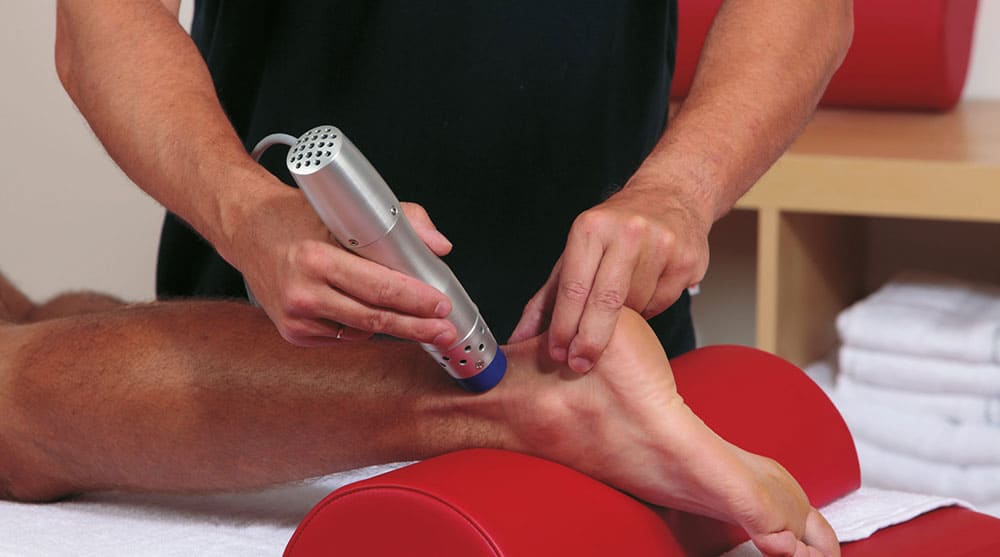 Listen Now
An Inside Look at Shockwave Therapy for Heel Pain, now available in Valencia, CA
Read More
Listen Now
An Inside Look at Shockwave Therapy for Heel Pain, now available in Valencia, CA
Read More
-
 Listen Now
Common Prescriptions and OTC Medications That Affect Your Feet and Certain Foot and Ankle Conditions
Read More
Listen Now
Common Prescriptions and OTC Medications That Affect Your Feet and Certain Foot and Ankle Conditions
Read More
-
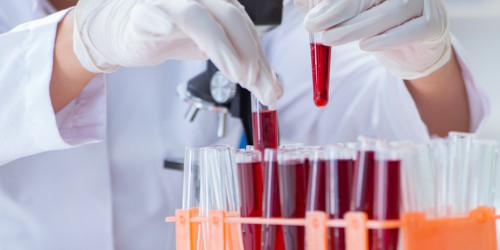 Got Plantar Fasciitis or Achilles Tendonitis? Could PRP, Amniox Stem Cells or Cortisone Answer Your Pain Relief Prayers?
Read More
Got Plantar Fasciitis or Achilles Tendonitis? Could PRP, Amniox Stem Cells or Cortisone Answer Your Pain Relief Prayers?
Read More
-
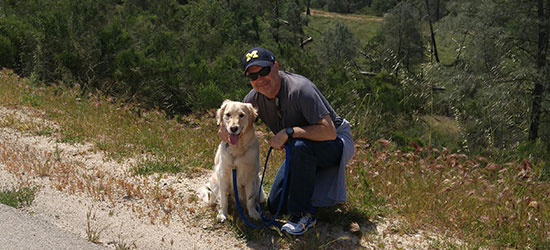 Listen Now
Avoiding Foot and Ankle Overuse Injuries While Dog Walking
Read More
Listen Now
Avoiding Foot and Ankle Overuse Injuries While Dog Walking
Read More
-
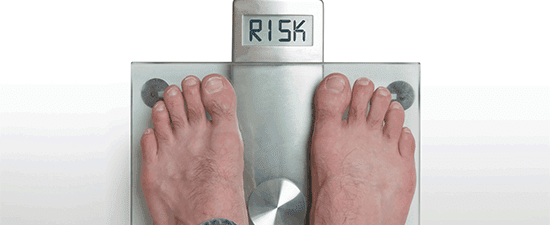 Listen Now
How Carrying Extra Weight Affects Your Feet and Ankles
Read More
Listen Now
How Carrying Extra Weight Affects Your Feet and Ankles
Read More
-
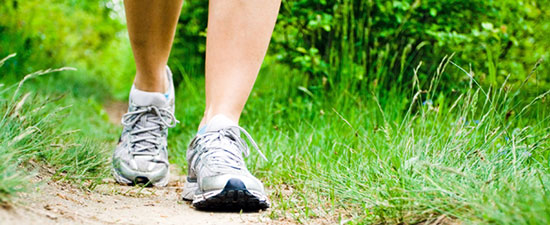 Listen Now
Beat the 6 Most Common Walking Pains
Read More
Listen Now
Beat the 6 Most Common Walking Pains
Read More
-
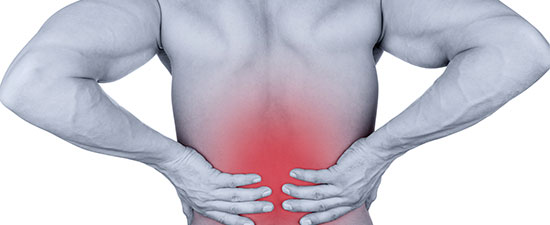 Listen Now
Your Lower Back Pain May Be Caused By How You Walk
Read More
Listen Now
Your Lower Back Pain May Be Caused By How You Walk
Read More
-
 Listen Now
What's Plantar Tendonitis and Why is it Still a "Medical Mystery"?
Read More
Listen Now
What's Plantar Tendonitis and Why is it Still a "Medical Mystery"?
Read More
